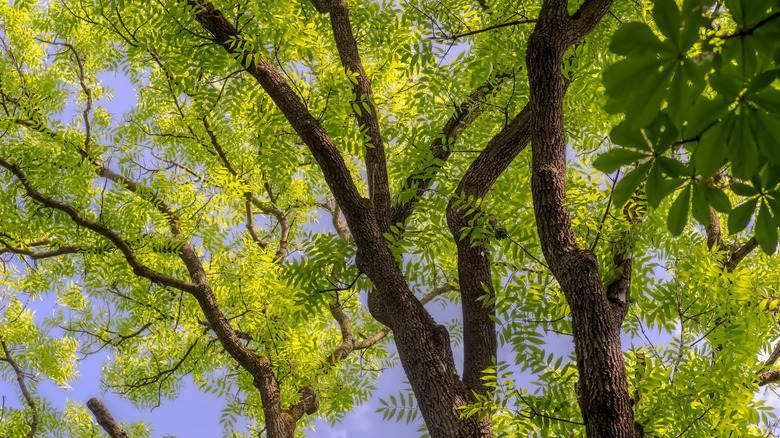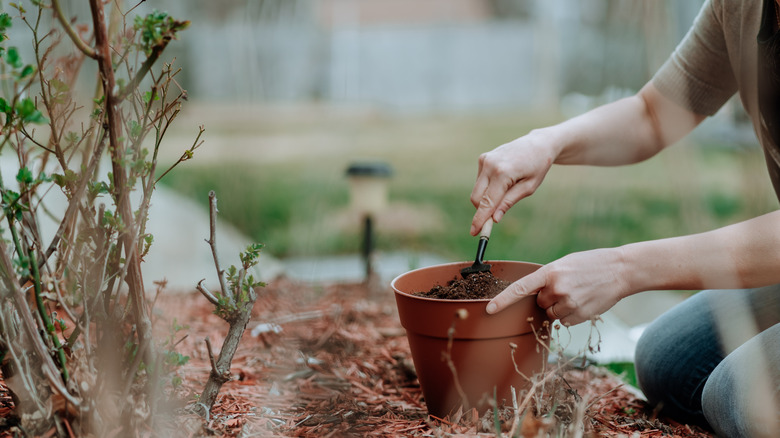The Popular Method For Successfully Propagating Ash Trees From Seed
Sprays of white blossoms in spring, dappled shade in summer, blazing foliage in fall, and an animal habitat year-round — these are some of the gifts ash trees offer. Ash trees (Fraxinus spp.) are also keystone species, meaning that countless other life forms depend on them for survival, and their presence can bring biodiversity into your garden. Yet, ash trees are threatened by many diseases and pests worldwide. Seed saving and propagation are a great way to do your part in protecting these invaluable trees.
To try growing your own ash tree from seed you'll need viable seeds, 3- to 5-gallon pots, potting soil, clean sand, and some time (and patience). You can purchase seeds for a variety of ash species online, but if you opt for collecting wild seeds, it's important to sort through them to find the ones with the best possibility of sprouting. Ash seeds are a type of samaras, or a seed casing with winged components. These 1-inch to 1 ½ -inch pods encase an embryo surrounded by many important layers. Wait until the seeds are mature to collect them. This usually occurs between September and December, depending on the species. They also need to be healthy and well-formed, with no signs of mold or pests. Gather as many seeds as you can, since you'll be applying a full layer of seeds to each pot.
Patience is key when propagating ash trees
Not only is starting ash trees from seed possible, it can also do a lot of good for your local ecosystem in the long run. However, "the long run" are the operative words. In order to sprout, ash trees go through repeated periods of hot and cold weather. Because of this, it's common for ash seeds to sprout after their second winter post-planting. Don't give up if your seeds don't sprout in year two though, as it is not unheard of for ash seeds to take several years to sprout.
Set your seeds up for their best chances of success by soaking them in water overnight before planting. If you have seeds of red, white, or green ash, you may be able to speed up the lengthy germination process with some time in the fridge, as well. Using the technique of seed stratification, and storing these ash seeds at 40 degrees Fahrenheit for a month or two can help them sprout more quickly.
Between November and January, fill your pots about half full with potting soil, and pack it down lightly. Then sprinkle the soil with seeds; you should still see soil beneath the seeds, but overlapping is okay. Just barely cover the seeds with a thin layer of sand, and place the pots outdoors in a spot that gets partial to full sun. It's also a good idea to cover the pots with wire mesh to keep animals out. Let the seasons run their course, with natural water and weather cycles doing their work. Within a year or two you'll hopefully see the first sprouts peeking their heads above the sand. With some luck, your ash tree will grow robustly enough to eventually bring color to your autumn garden.

